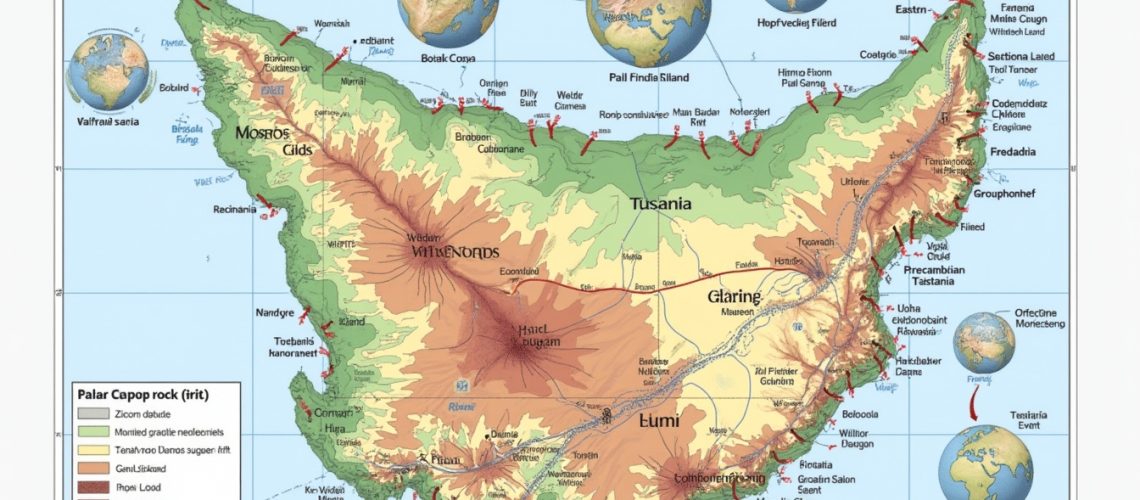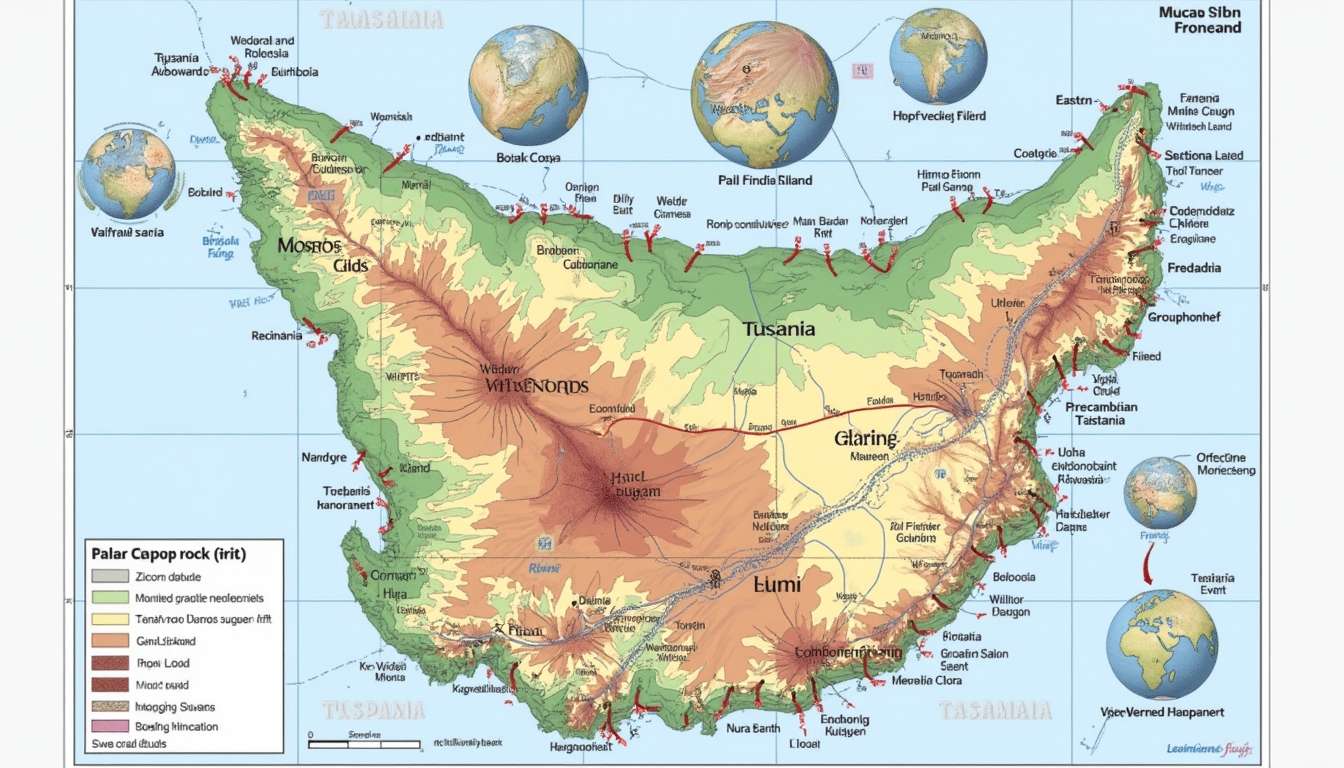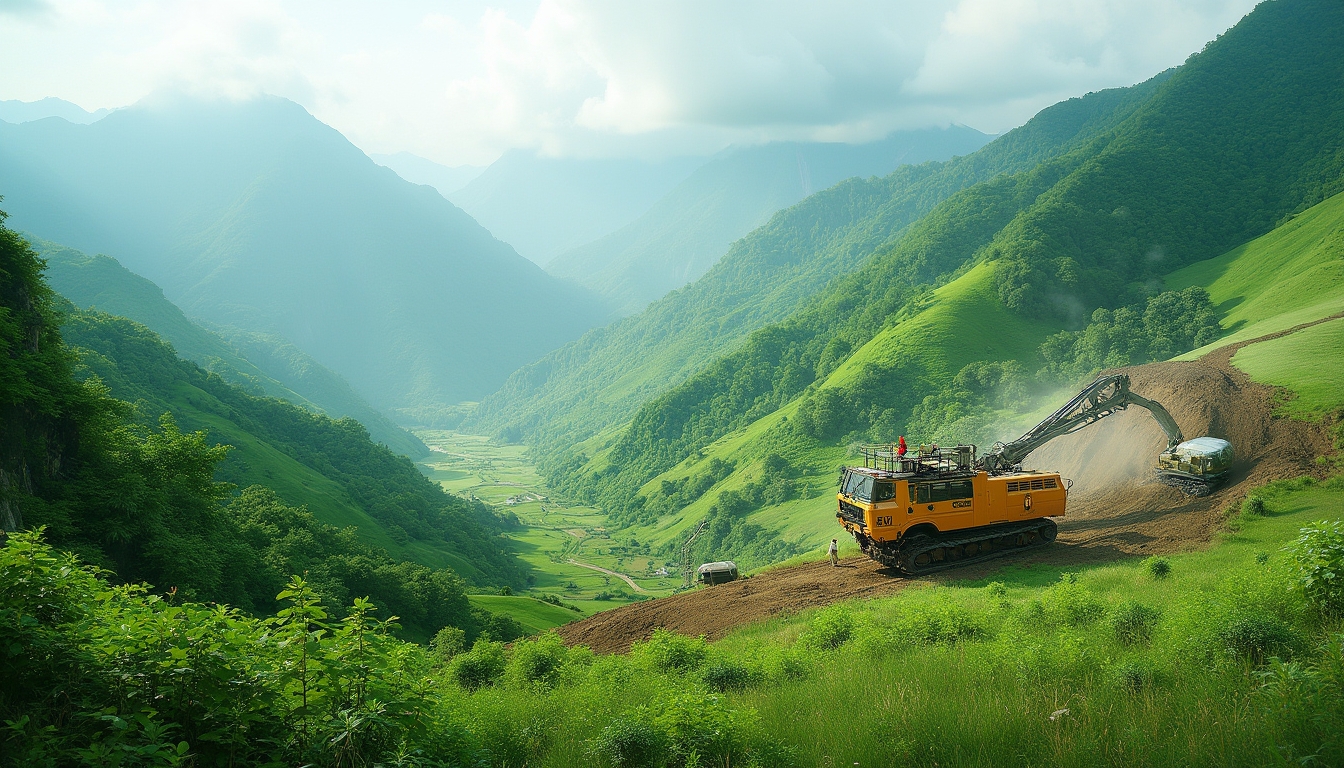Tasmania's geological narrative is a fascinating tale of ancient continental fragments, spanning billions of years of Earth's history. The western regions of Tasmania harbour rocks dating back an extraordinary 1.6 to 1 billion years, marking it as a true geological time capsule. These ancient rocks provide invaluable insights into the early processes that shaped our planet.
Unlike many landmasses, Tasmania is considered a unique microcontinent that only joined the Australian mainland approximately 500 million years ago. Its extraordinary composition stems from sedimentary deposits originating from two vastly different continents: North America and Antarctica. This unique blend has resulted in a complex geological structure that continues to intrigue scientists worldwide.
Geological studies reveal that the rocks forming Tasmania's foundation are not indigenous to its current location but represent complex sedimentary processes that occurred during the formation of ancient supercontinents. The zircon crystal records offer compelling evidence of these intricate geological migrations. Understanding these processes is crucial, as they illustrate how tectonic processes shape mineral deposits and influence the distribution of valuable resources.
How Did Supercontinents Shape Tasmania's Formation?
Tasmania's origins can be traced back to the supercontinent Nuna, which existed around 1,750 million years ago. Subsequent tectonic rifting events approximately 1,400 million years ago initiated the separation of North America from Antarctica, strategically positioning proto-Tasmanian fragments across these emerging continental boundaries.
The region's geological development was characterised by unique sedimentary accumulation processes in deep-ocean environments. Turbidity currents played a crucial role in depositing vast sediment layers, creating the foundational structures that would eventually become Tasmania. These processes are akin to the dynamics of Earth's crust and rock deformation, which continue to shape the planet's surface today.
Geochronological studies utilising zircon dating techniques have been instrumental in confirming these complex geological timelines, providing researchers with precise insights into the microcontinent's evolutionary journey. Such detailed analysis is part of the broader field of geological study of ore deposits, which helps in understanding mineral formation processes.
Why Is There a Geological Connection Between Tasmania and the Grand Canyon?
The remarkable geological connection between Tasmania's Rocky Cape Group and the Grand Canyon's "Ana" Group reveals a fascinating shared history. Both rock formations date back 1.25 to 1.15 billion years and demonstrate remarkably similar sedimentary compositions resulting from the Grenville orogenic event.
Zircon analysis has uncovered critical evidence of 1.8 to 1.4 billion-year-old crustal signatures, suggesting these distant regions were once intimately connected during the supercontinent Rodinia's existence. This discovery challenges traditional understanding of continental configurations and highlights the dynamic nature of Earth's geological past.
Paleogeographic reconstructions provide compelling visual representations of how these seemingly disparate landscapes might have been interconnected millions of years ago. Such findings underscore the importance of geological field studies and their significance, offering valuable perspectives on historical geology.
What Role Did the Orogenic Events Play?
Orogeny, the process of mountain building, has been fundamental in shaping Tasmania's landscape and contributing to its remarkable mineral diversity. The Grenville orogeny, occurring between 1.3 to 1 billion years ago, and the Tabberraberan orogeny around 390–380 million years ago, were particularly significant in creating Tasmania's complex geological structure.
These orogenic events not only formed mountains but also led to the metamorphism of existing rocks and the creation of new mineral deposits. The immense pressures and temperatures during these periods facilitated chemical reactions, resulting in the formation of economically important minerals such as tin, copper, and gold.
Notable examples include the Mount Read Volcanic Belt, which is rich in volcanic-hosted massive sulphide (VHMS) deposits. This area demonstrates how tectonic collisions can uplift land masses and facilitate mineral formation. The belt is renowned for mines like the Rosebery and Mount Lyell, which have been significant contributors to Tasmania's mining industry.
These tectonic activities are closely related to innovative techniques in geological mineral discoveries, shedding light on how modern methods can uncover new resources. Advanced exploration technologies, such as geophysical surveys and geochemical analysis, have enhanced our ability to detect and extract these minerals responsibly.
The interaction between Victoria and Tasmania during these orogenic events illustrates the transformative power of geological processes. Understanding these interactions helps geologists predict mineral locations and comprehend the broader implications of orogenic events on continental structures.
Furthermore, these events played a role in shaping Tasmania's topography, influencing its climate, ecosystems, and even human settlement patterns. The rugged terrain resulting from mountain-building processes has created unique habitats that support diverse flora and fauna, some of which are endemic to Tasmania.
When Did East and West Tasmania Collide?
The Devonian period, approximately 400 million years ago, marked a critical moment in Tasmania's geological evolution when its eastern and western regions collided. This tectonic event occurred along the Tamar fault zone, effectively suturing these distinct geological domains together.
The collision highlighted significant differences in rock ages, with ancient Precambrian formations in the west contrasting sharply with the Paleozoic arcs in the eastern regions. This juxtaposition of old and young rocks has created a complex geological mosaic, making Tasmania a hotspot for geologists.
Detailed geological field studies have been instrumental in mapping and confirming this fascinating collision narrative. Techniques such as structural mapping, petrological analysis, and radiometric dating have provided evidence for the timing and nature of these events.
Such studies exemplify the importance of geological field studies and their significance. By analysing the evidence left behind by these monumental events, scientists can piece together the history of our planet's ever-changing surface.
Moreover, the collision had significant implications for mineralisation processes. The deformation and metamorphism associated with the tectonic activity created pathways for hydrothermal fluids, leading to the concentration of minerals. This has resulted in the formation of ore deposits that are of economic importance today.
How Did Gondwana's Breakup Influence Tasmania's Isolation?
Gondwana's breakup, commencing around 160 million years ago, ultimately led to Tasmania's complete separation from Antarctica approximately 45 million years ago. During periods of lower sea levels, an ephemeral land bridge connected Tasmania to mainland Australia, allowing for biological and human migration.
The Tamar graben formation, occurring between 70 to 140 million years ago, represents a fascinating example of a failed rift system, partially filled with younger sedimentary deposits. This geological feature provides insights into the complex tectonic processes that shaped Tasmania's current configuration.
Understanding these processes is crucial for comprehending the broader context of plate tectonics and how they influence continental drift. It also aligns with studies on how tectonic processes shape mineral deposits, which examine how such large-scale movements impact mineral formation.
What Is the Significance of Granite Intrusions and Mineral Discoveries?
Devonian granite intrusions on Flinders Island and eastern Tasmania offer remarkable evidence of subduction and orogenic uplift processes. The region is known for unique mineralogical discoveries, such as the Killiecrankie "diamond"—actually a topaz—which illustrates the area's complex geological heritage.
These granite formations not only provide spectacular landscapes but also hint at the potential for further mineral resources waiting to be discovered in Tasmania's diverse geological terrain. Modern exploration methods, including innovative techniques in geological mineral discoveries, are essential for uncovering these hidden treasures.
Mining and mineral exploration have long been significant to Tasmania's economy. Continued research and investment in this sector could lead to substantial economic benefits, as well as a deeper understanding of the geological processes at play.
Additional Insights into Tasmania's Geological Complexity
Tasmania's geological history is not just a chronicle of ancient rocks and tectonic movements; it is a living laboratory for understanding Earth's dynamic processes. The state's unique position and history make it an ideal location for studying the dynamics of Earth's crust and rock deformation.
Furthermore, Tasmania's geological diversity has implications for other fields such as climate science, ecology, and natural hazard assessment. The interplay between geological formations and biological evolution in Tasmania provides valuable insights into how life adapts to changing environments over geological timescales.
Key Takeaways: Tasmania's Geological Evolution
Tasmania's geological history represents a complex narrative of continental migration, tectonic interactions, and mineral formation. From its origins in the supercontinent Nuna to its current configuration, Tasmania continues to fascinate geologists worldwide.
Here are the key points to remember:
- Ancient Origins: Tasmania contains some of the oldest rocks in Australia, dating back 1.6 to 1 billion years, providing a window into early Earth history.
- Microcontinent Formation: Its unique position as a microcontinent that joined Australia 500 million years ago contributes to its diverse geological makeup.
- Supercontinent Connections: Geological evidence links Tasmania to ancient supercontinents like Nuna and Rodinia, showing past connections with North America and Antarctica.
- Orogenic Events: Mountain-building processes like the Grenville and Tabberraberan orogenies played significant roles in shaping the landscape and forming mineral deposits.
- East-West Collision: The Devonian collision of eastern and western Tasmania along the Tamar fault created a mosaic of rock types and complex geological structures.
- Gondwana's Breakup: The separation from Antarctica and the dynamics of the Tamar graben have influenced Tasmania's isolation and geological features.
- Mineral Resources: Granite intrusions and tectonic activities have resulted in rich mineral resources, important for economic development.
Future research focusing on advanced isotopic analysis and precise plate reconstruction models will undoubtedly reveal even more intricate details about this remarkable microcontinent's extraordinary journey through geological time. Embracing innovative techniques in geological mineral discoveries will not only enhance our understanding but also potentially lead to significant mineral findings.
Want to Discover the Next Big Mineral Find in Tasmania?
Dive into Discovery Alert’s AI-driven alerts to uncover significant mineral discoveries, guided by detailed geological reports that unravel complex historical tectonic interactions. Enhance your investment strategy today with a 30-day free trial by visiting Discovery Alert.







